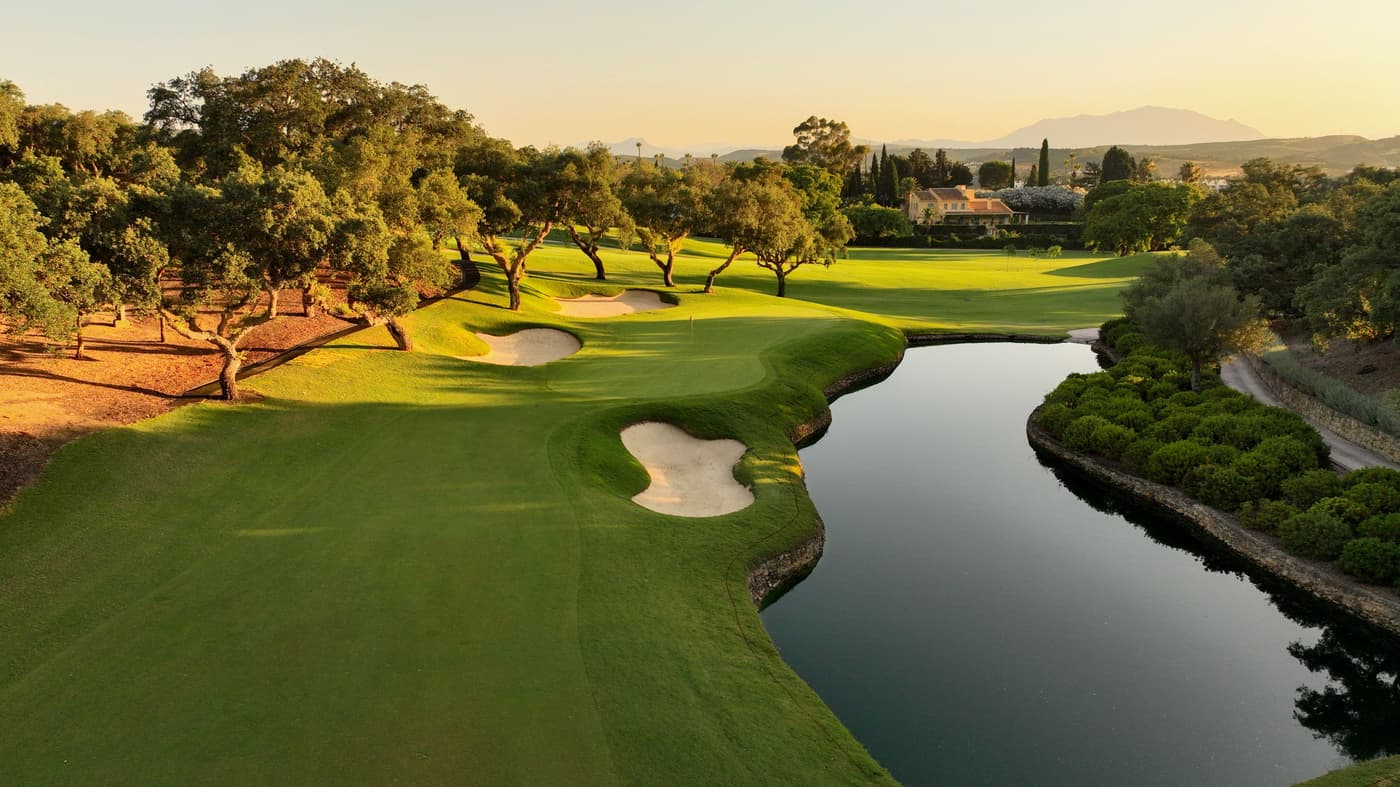
Real Sotogrande
Sotogrande, Andalucía
- AddressP.º del Parque, 11310 Sotogrande, Cádiz, Spain
- Championships hosted
It is very rare to find a golf course on the Spanish Costa del Sol that was constructed more than 50 years ago and even rarer, that after five decades, it still provides a stern test to even the best golfers. Both are true of the Real Club de Golf Sotogrande.
Back in 1964, Sotogrande was a largely uninhabited area just north of Gibraltar, with only a few pockets of population located in a few country estates. An American citizen, Joseph McMicking, who lived in the Philippines, visited the area and could see the land's great potential, with its excellent weather, wonderful mix of countryside and proximity to the stunning coastline. In that same year he initiated what is now regarded as one of the best developed residential and tourism areas in Europe and its first golf course: Real Club de Golf Sotogrande.


Opened in 1964, the course was designed by Robert Trent Jones. It was his first European course, and it is a credit to the man and his design that the par 72, 6,224-metre layout is still enthralling players after all these years. Sotogrande is a private members' club, which maintains an air of calm and restrained sophistication, whilst at the same time providing a warm welcome to visitors. The clubhouse is well designed and elegant, the food and drink excellent and well presented, and the changing rooms large with showers to die for.
Between 1998 and 2001, Sotogrande was used for European Tour Qualifying Finals and its class, quality and reputation are recognised globally. In Sotogrande's 30th year, it was awarded royal status. The challenge that awaits every golfer at Sotogrande was well summed up by the designer, Trent Jones, when he once described a golf course as a battleground: players attack the course and it is the architect's obligation to defend it. This he has achieved wonderfully at this Spanish masterpiece.
Every hole requires the player to plan his attack with care and execute the shots successfully to escape the many strategically placed bunkers and water hazards. The fairways appear wide and the semi-rough is Augusta-like in its appearance, but stray from the short stuff and the wonderful cork, eucalyptus, pine, oak and palm trees – which line almost every fairway – will make life and making par very difficult. Only when the ball drops into the hole will the golfer be able to relax. The putting surfaces are expertly shaped and contoured and they are all wonderfully maintained, making them fast and true all year round.
Holes to look out for include the 4th, a wonderfully difficult 202-metre par three with a wickedly sloping green. The 7th is a cracking par four measuring 381 metres with a narrow green and water guarding the right side so it's a tough proposition. Holes 12 to 14 and 16 to 18 are all tough, featuring well-placed water hazards. It's quite a finishing stretch.
To help the golfer at Sotogrande, always remember that most of the greens are elevated and that a lot of the slopes in the fairways are very subtle but not insignificant, so make sure to take enough club for the distance, and then take one more.
The course underwent a massive upgrade in 2015-16 which was completed by Roger Rulewich and David Fleury in two stages to allow members the use of one nine at all times. Putting surfaces had grown by up to 40% of their original size over time so green shapes were fully recovered, with sub air systems installed to ensure their optimum performance. Fairways and tees were also reconstructed, using 41,000 kilometres of drainage, 71,000 tonnes of sand and 37 hectares of Bermuda grass.
Course Reviews
Leave a Review
This course has not been reviewed.
If you have played this course, consider .
Thanks for the review
Your review has been successfully submitted and will be reviewed for approval.
Course Reviewed
You’ve already submitted a review for this course.
Course Architect
View All
Robert Trent Jones arrived in New York aboard the steamship Caronia from Liverpool on Monday, 29th April 1912, exactly two weeks after the Titanic had sunk on her maiden voyage across the Atlantic.
